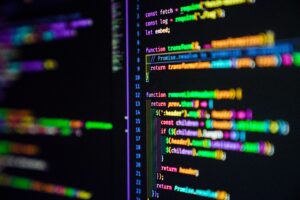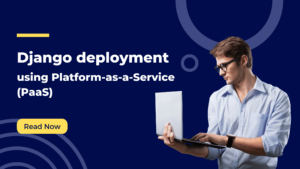Learning has taken a front seat in the corporate world. This has led to an influx of learning technologies hitting the market, such as learning experience platforms (LXP) and learning management systems (LMS).
In this guide, we’ll walk you through a comprehensive comparison between LMS and LXPs. We’ll highlight each one’s benefits and features, and drill into the differences that may guide you toward one solution over the other.
Before we jump in, here are the key differences between an LXP and LMS :
- LXPs are centered around the learner’s experience, allowing users to personalize their learning process, whereas LMSs put greater control into the hands of administrators.
- LXPs offer a dynamic, non-linear learning model, allowing users to explore content in various ways. LMSs, by contrast, typically promote a more pre-determined course structure.
- LXPs often host a variety of content types and even allow users to upload their own content, while LMSs offer more formal educational content.
LXPs excel in supporting more fluid learning needs, like continuous learning and professional development, while LMSs favor objective-oriented and time-sensitive learning programs.
What is a Learning Experience Platform (LXP)?
An LXP is a digital solution focused on building personalized learning experiences. Users guide their own learning process with the ability to choose what content to engage with and opportunities for collaborative learning (i.e. discussions, sharing content, etc.). This personalized learning journey lets trainees develop skills of their choosing at the pace of their choosing, making LXPs a prime choice for professional development.
How Does a Learning Experience Platform Work?
While users have control of their learning path, LXP platforms work to further personalize training by leveraging algorithms, AI, and data analytics to recommend and deliver content most relevant to a trainee’s needs and interests.
LXPs are a central hub for both formal and informal learning. Users can engage with preloaded content or generate and share their own with other learners.
The typical LXP starts with creating a user profile for each enrolled user. This profile allows the platform to monitor each user’s learning interactions, goals, preferences, and history within the platform.
The user profile helps guide the LXP algorithm to recommend educational content most relevant to the user’s preferences and needs. Advanced LXP solutions analyze user data to provide accurate insights into learner engagement and training effectiveness.
Benefits of an LXP
Below are the top benefits that make LXP systems ideal for training professional service providers like developers and other experts.
- Personalization: From user to AI, LXPs use data analytics to personalize training experiences to reflect the unique needs and requirements of each learner. This process is constant, as LXPs adjust each user’s learning path and content recommendations as their learning needs change.
- Informal and Social Learning: LXPs encourage informal and social learning, which many users find more engaging. Users can share knowledge, collaborate, and engage in peer-to-peer learning, similar to how teams share knowledge in in-person settings.
- Mobile Accessibility: LXPs are often accessible via mobile devices, offering flexibility in when and where learning can take place, an essential component for the majority of today’s learners.
- Continuous Learning: LXPs support continuous learning and self-improvement by letting users access materials or courses to acquire new skills.
What is a Learning Management System (LMS)?
An LMS is a dynamic platform for creating, managing, delivering, and tracking educational content. While LXPs focus on experience and personalization, LMSs focus on results-based learning.
LMSs typically offer formal learning structures with predetermined user pathways. These structures ensure all users receive the same training and content while monitoring performance and course management, helping to boost employee development.
How Does a Learning Management System Work?
An LMS is a central hub for delivering, managing, and assessing team education. You can upload and store learning materials, such as courses, quizzes, videos, and documents, onto the platform. Admins manage learning materials in LMS, with the power to enroll or assign users to specific courses or programs.
Users or learners access the LMS through a web interface to view learning materials, complete assignments, take quizzes and communicate with instructors. They also have access to interact with peers via discussion forums or messaging tools, if these tools are chosen by the course admin.
Each user’s learning progress is constantly monitored with KPIs like accessed materials, quiz scores, time spent on each activity, and enrollment and completion rates.
LMS users are frequently motivated by gamification features such as certificates or credentials that provide learners with a tangible goal to work towards.
Benefits of an LMS
An LMS offers users a centralized place to store education materials, send users through a course, and measure their performance. These systems provide users with clear expectations and content delivery they need to succeed. Other benefits that make investing in an LMS worthwhile are:
- Learning Optimization: Modern LMS platforms provide robust tracking and reporting tools for monitoring user progress and performance. The insights provided by the tools can help you make data-driven decisions to optimize your educational programs to deliver better content for your team.
- Hassle-Free Accessibility and Scalability: Authorized students can access LMS content anytime, anywhere, as long as they have an internet connection. Cloud-based LMS solutions can accommodate as many students as you want, ensuring scalability.
- Automation: LMS solutions streamline administrative tasks, such as user enrollment, reporting, and notifications. Automating these tasks prevents errors, reduces workload, and improves efficiency. It also reduces training and development costs by reducing the need to invest in instructors, and physical resources like workbooks and classroom space.
- Integration: Leading LMS applications can integrate with HR databases and other software systems to automate staff onboarding. It ensures only qualified team members who’ve completed training materials can access specific jobs.
LXP vs. LMS: Key Similarities
Here are the key similarities between an LXP and an LMS:
- Content Management: Both LMS and LXP systems let you upload and manage various types of learning content, including courses, documents, videos, quizzes, and assessments. They both give you the opportunity to build content to suit your needs and team and deliver content at the right speeds.
- Mobile Access: Users can access LMS and LXP courses via browsers or apps on computers and mobile devices.
- Certificate Issuing: The top LMS and LXP systems issue certificates to learners upon completing specific courses or learning activities.
- Tracking and Reporting: Learning management systems and learning experience platforms have tracking and reporting capabilities for monitoring user progress. Assessing user performance can help you identify your training program’s effectiveness and areas for improvement.
- Integration: LMS and LXP systems can integrate with other software to streamline user management and data sharing.
LXP vs. LMS: Key Differences
All in all, the key difference between an LMS and a LXP is control. An LMS focuses on delivering the course, whereas an LXP is all about how that course is delivered to each participant.
Here is a detailed breakdown of the differences between an LMS and an LXP:
- Control: With LMS platforms, you assign courses to trainees, and they can access only the training materials you authorize. You can think of LMS platforms as the “what are we learning” component of training, whereas LXPs specialize in the “how are we learning” component. LXPs allow users to personalize their learning experience, which may be more suited to a company that boasts peer-to-peer learning and not in a highly regulated industry focused on compliance.
- Content Management & Learning Models: Only administrators or the learning and development team can upload training materials to an LMS. On the other hand, LXPs allow trainees to upload and share user-generated content. LMSs have a structured, top-down, instructor-led learning model where the learning and development team determines what trainees learn. LXPs, on the other hand, are dynamic, allowing users to explore content in non-linear ways. The flexibility of LXP content allows all users to customize their learning journey, which is great for circumstances that allow for peer-to-peer learning and professional development, but in an environment that requires learning to be done in a specific way, LMSs have the edge.
- Content Variation: LMSs tend to host longer-form content in a predetermined format. LMS educational content follows this format to adhere to SCORM (Shareable Content Object Reference Model). LXPs, on the other hand, can host any content type, including podcasts, videos, articles, and more. Variation in content allows users to engage and get deeper into their learning, which may be a more effective way to learn in certain professional services.
- Continuous Learning & Professional Development: LMSs provide mostly event-based or one-time training programs. In contrast, LXPs are great for continuous learning and professional development by allowing users to access educational content whenever they want. An LMS works best with content that doesn’t change much or is facilitator-managed, with clear outcomes to be measured. LXPs are able to grow, shift, and scale with your team and make a great choice when your industry is constantly changing.
- Record Keeping: Because LMSs are facilitator-developed and work towards specific objectives, most Learning Management Systems are equipped with or integrated with analytics platforms that track the performance and progress of learners and their scores. Because LXPs offer so much flexibility, it’s harder to track learners’ compliance, making LMSs a great choice. LXPs also keep records of learners’ progress, but as they are more equipped for non-linear learning, they’re a great tool for establishing a culture of continuous learning and pursuing professional development rather than objective-focused education. LMS analytics are a great record-keeping tool for regulated industries and provide clear analytics for learning administrators.
LXP vs. LMS: Deciding Which Learning System is Best for Your Team
At the end of the day, when organizations choose between an LMS and an LXP, they should evaluate if their learning requirements are embedded in compliance and if that is the culture of the company they’re at.
An LMS is the best choice for developing a robust repository of training materials that allows you to easily track, administrate, and control education initiatives and content.
In contrast, an LXP is ideal for providing employees with an interactive learning experience, where peer-to-peer learning may be a core component of learning curricula, and compliance isn’t a big focus of that education. Rather, the culture is all about continuous development.
Whether you’re in the market for an unparalleled LXP or a cutting-edge LMS, Appsembler has the best of both worlds. With industry-leading features and user-centric design, we empower organizations to craft transformative learning experiences and simplified learning journeys. With Appsembler, you’re not just adopting a platform. You’re embracing the future of organizational learning.
Appsembler: Enhance Your Team’s Educational Experiences
LMS and LXP systems offer unique benefits, but you don’t have to settle for one or the other. Appsembler offers a comprehensive learning management system to integrate with your desired LXP. Appsembler’s platform allows you to enjoy the best of both worlds and deliver optimized educational experiences that achieve your desired results.
Contact us today to schedule a free demo and see how Appsembler can help you equip your team with the right skills.
Conclusion
Choosing between LXP and LMS depends on your educational goals and how you envision the learning experience for your users. While both platforms serve the e-learning community, they cater to different needs and preferences. Consider your learners, content, and desired outcomes before making a decision.
Frequently Asked Questions
The chief difference lies in control and user experience. An LMS is about structured course delivery, concentrating on “what” is learned. In contrast, an LXP focuses on “how” the course is delivered, offering a more personalized learning journey for each participant.
LMS platforms typically have a centralized control system where administrators assign courses to learners, limiting them to authorized training materials. LXPs, however, empower learners with more control, enabling personalization and flexibility in the learning process.
In LMS platforms, administrators or the learning and development teams can upload content. LXPs have a more democratized approach, allowing learners to contribute and share user-generated content.
LMSs employ a top-down, structured learning model, focusing on instructor-led courses. LXPs, on the other hand, provide a dynamic environment, enabling learners to explore content non-linearly and customize their learning journey.
LMSs, being facilitator-developed and objective-driven, are often equipped with integrated analytics platforms to monitor learner performance and progress comprehensively. LXPs, due to their flexible nature, might offer a broader view of learning patterns but might not be as detailed in compliance tracking as LMSs.



